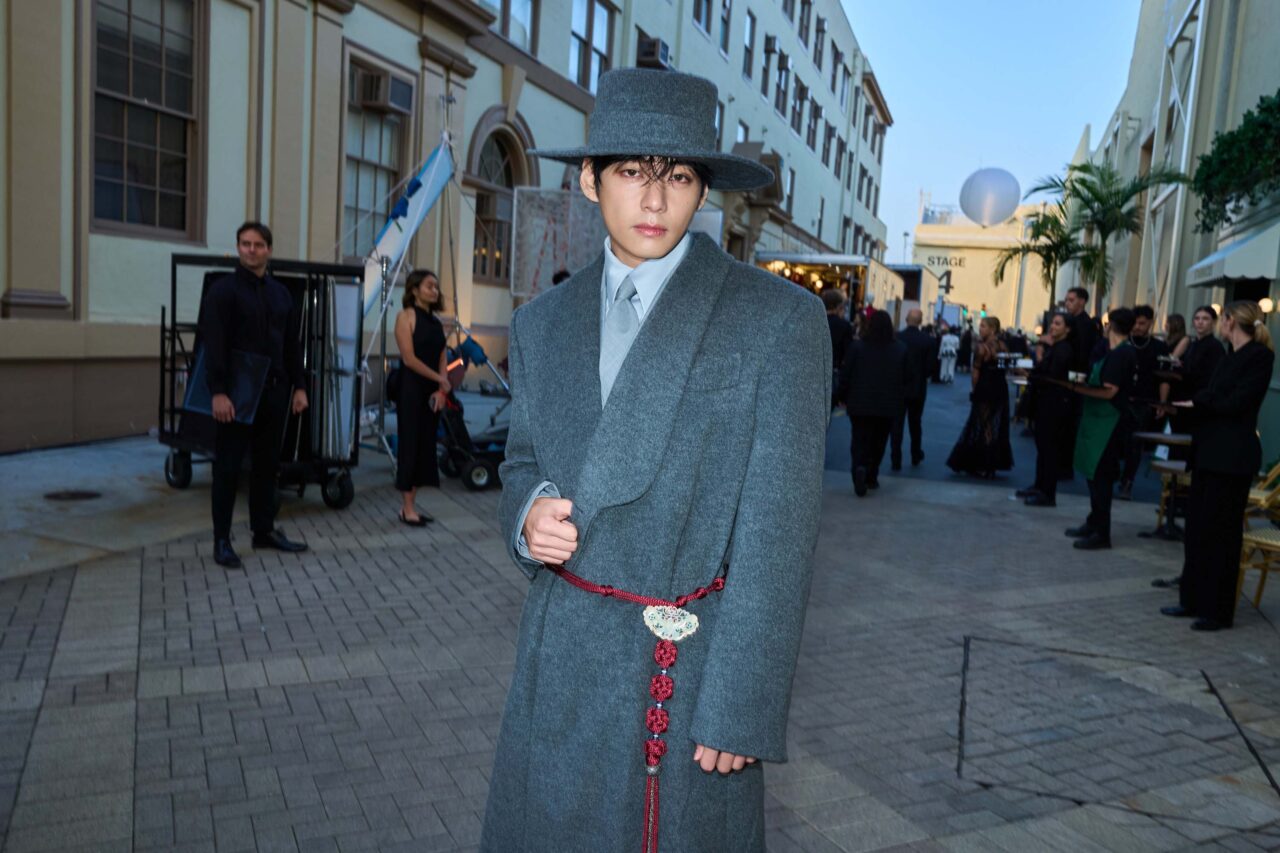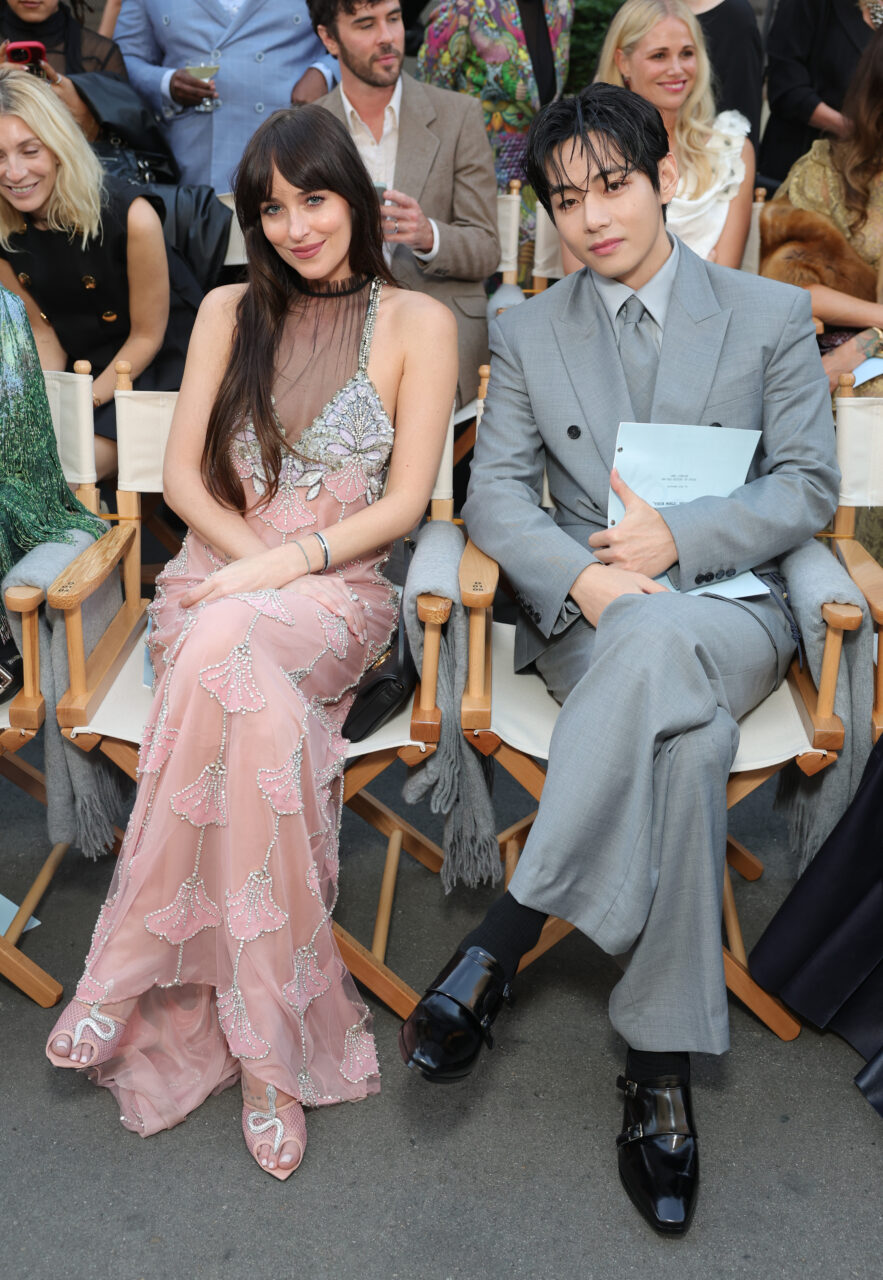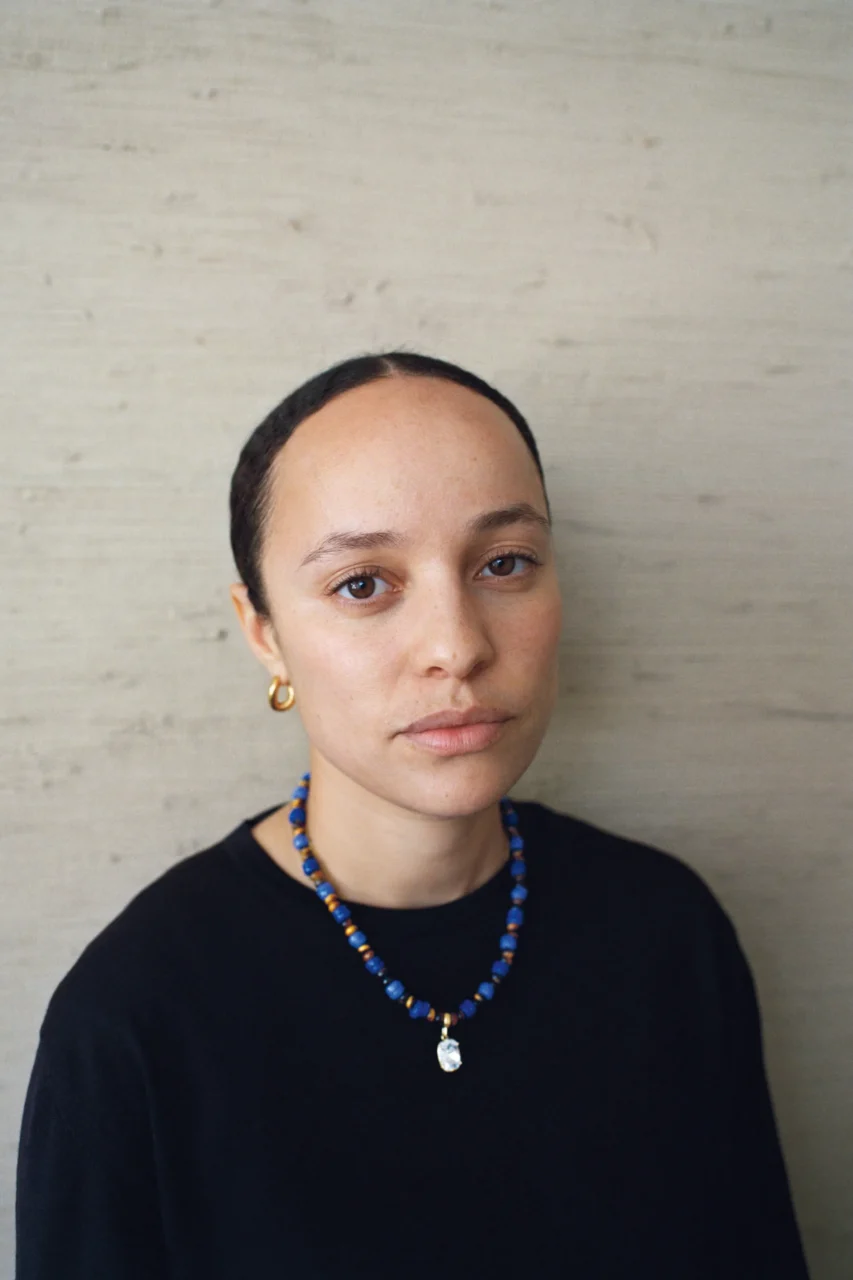Hong Kong’s tailoring history dates back decades, yet it’s fallen off course. Kimberley Road was once the city’s equivalent of London’s Saville Row. Now? A feeble reflection.

Kimberley Road in Hong Kong, circa 1965. The signs include one for Frank L. Chan, John Yue tailors, and Ascot Chang
Photo: Pictorial Parade/Archive Photos/Getty Images
On a sweltering afternoon in Hong Kong, I went to the 7th floor of Luk Yu Building, where Bryceland’s & Co., a famed menswear haberdasher, brims with storied treasures. Between rolling his cigarette, Ethan Newton, the co-founder, dressed in a silk Western shirt, opines, “There are more super high-level Florentine and Neapolitan suits and more Japanese and Italian bespoke shoes on the feet of men in Hong Kong that you can find in many other places.”

Bryceland's & Co. co-founder Ethan Newton in his Hong Kong store in Luk Yu Building
Photo: Karrie Lam
40 years deep in the apparel industry, Newton has found Hong Kong’s clientele to be sophisticated and discerning. While these clients are supported by an assemblage of world-class tailors, the reality is that the city’s tailoring scene has faded from its glory days.
Is it possible to bring it back?
Hong Kong Tailoring’s Layered Past
The time is the 1950s. Good quality, cost-efficient, and incredibly fast: 24 hours! Count on the people of Hong Kong, teeming with a ‘can-do’ spirit, to stitch together ‘bespoke’ and ‘speed’.
The wide range of Hong Kong tailors served a bourgeoning range of keen clients. Some tailors worked with government officials, businessmen, and expats, attracting overseas celebrities like David Bowie. The “Big Four Tailors” of Hong Kong—A-Man Hing Cheong, H. Baromon, Yee On Tai and Ho Chiu— were of this calibre.
Some tailors attracted US Navy sailors who came to Hong Kong from the 1950s onwards while on shore leave. At Fenwick Pier, where ferries from Navy ships docked, lines of sailors in crisp uniforms eagerly sought the perfect suit from Four Shings And Sons, hoping to carry a piece of Hong Kong craftsmanship back home. Anthony ‘Tony’ Wong took over this family business in 1994 and worked at their shop at the Pier until he had to relocate due to the Pier’s demolition in 2022.
Meanwhile, some tailors created uniforms and suits for the Gurkha soldiers who came to Hong Kong with the British Army in the 1960s. The famed Sam’s Tailor got their start from this business. Having built a clientele of notable names, including everyone from Bill Clinton to Bruno Mars, Sam’s Tailor is now known by Gen Z for their viral Instagram reels.
Of the different types of tailors, those of the Shanghainese tailoring style were known to be the most skilled. Most tailors in Shanghai were migrant workers who fled Ningbo at the turn of the 20th century. These tailors were trained by tailors from the UK who came to China with affluent British and American entrepreneurs who gained their fortunes from the opium trade.
Russian tailors, who accompanied engineers building the Chinese Eastern Railway in the late 19th and early 20th century, also influenced the Shanghainese tailoring style.
In 1941, The Shanghai Cutting and Tailoring College was established, offering comprehensive training. Tailors trained here were known as the “Red Gang” as a nod to their Caucasian clients’ red hair. Painstaking detail and skilled craftsmanship were their forte. To suit their Caucasian clients’ build, the garments were exhaustively pressed to create a fuller and rounder chest.
When the Chinese regime changed in 1949, expat clients and over 600 Red Gang tailors moved to Hong Kong. At the time, a Cantonese tailoring style had already been established. Suits by this “Guang Dong Gang” are straighter with less emphasis on the curvature of the chest due to their Chinese clients’ physique, thus demanding less technique.
The Guang Dong Gang gave Hong Kong tailoring its reputation for being fast and affordable without sacrificing quality, suited for the time- and money-conscious client. The Red Gang made Hong Kong tailoring famous for its superb quality.
Why Did Hong Kong’s Tailoring Lose Its Edge?
But by the 21st century, Hong Kong tailoring houses lost their edge. Most Hong Kong tailoring houses began moving production processes offshore, old Master Tailors were dying out, and new apprentices were scant. By 2016, only two of the “Big Four Tailors” were in operation.

Jason Yen personalises his bespoke suits by using Hermès silk scarves as pocket squares
Photo: Karrie Lam
Jason Yen is a tailoring aficionado who purchased his first suit on Savile Row at 16. He recalls returning to Hong Kong from the UK during the 90s and being disappointed by the tailoring offered.
“I think the things in Hong Kong were a bit boring in the sense that some of the older, skilled workers who knew Shanghai tailoring had passed away. And so they [existing tailors] started to be a little bit more lousy with the quality.”
Craftsmanship had declined to the point where even the smallest details showed a lack of care. At one point, Yen imported 30 different colours of silk threads, because the tailor he was working with in Hong Kong didn’t have the right threads for sewing on buttons to the standard he required.
The Armoury's Hong Kong store in the Pedder Arcade
Photo: Karrie Lam
There was also the problem of identity.
“Clothing is very much an identity for the local people,” Mark Cho, the founder of The Armoury, an influential menswear haberdasher established in 2010, says. “A lot of the Hong Kong tailors were actually very talented,” he confirms, “but they never really learned how to impose a design view on what they were making.”
“Even Italy, you have the Milani style, the Roman style, the Neapolitan style, different styles,” Yen echoes, “And even Saville Row, you have more military looks or those softer, drape style looks.”
“I’m not saying they’re [the tailors in Hong Kong] bad,” he continues, “but originally, ‘suiting’ is not a Hong Kong thing. I mean, it’s not like cheongsam, so I prefer the original, if I can.”
The Families Who Keep Tailoring Alive
In 1961, Ascot Chang expands on Kimberly Road, Tsim Sha Tsui
Photo: Courtesy of Ascot Chang
Ascot Chang has been crafting bespoke shirts since 1953. Until now, no bespoke shirtmaker in Hong Kong compares.
Chang left the Fenghua district of Ningbo for Shanghai at 14 years old. In Shanghai, he apprenticed as a shirtmaker before moving to Hong Kong and establishing his namesake brand. It was a humble operation. He went knocking door to door until he had built enough of a clientele to open his own store on Kimberly Road. 70 years later, they have two stores in Hong Kong, two in Mainland China, one in New York, and one in the Philippines.
After his passing, his son Tony assumed the role of Director, and his grandson Justin Chang has been helping for the past 15 years. With a workshop of around 50 sifus, or tailors, in Hung Hom, and a workshop in Shenzhen, they now create bespoke shirts and suits for a large clientele.
“Our factory manager apprenticed under my grandfather, so it’s a family business in more ways than one,” Justin says.
As consumer preferences became more ‘casual’ after COVID due to the prevalence of work from home policies, Ascot Chang adapted. “A lot of customers now don’t wear ties to the office, and they were complaining that with a traditional shirt, the collar would collapse very quickly,” Justin explains. So came the ‘Ascot collar’, a unique creation designed to stand up naturally without a tie, which has been well received.
Menswear might move at a ‘glacial pace’ for those at Ascot Chang, but their ability to keep their fingers on the pulse of their clients’ needs and move with the tides of time proves why they have remained a cornerstone in tailoring after decades in the industry.
On the other side of the harbour is Empire Tailors. It’s one of the few bespoke tailoring stores that still runs its entire Shanghainese tailoring operation in Hong Kong and allows a peek into the process.
Established in 1983, this family business lies in the middle ground of high-quality Shanghainese tailoring and the relative affordability of a Guang Dong Gang tailor. They have a small team of 5 veteran tailors, each boasting almost four decades of experience. The Head Cutter Wai started when he was 12 years old.

Empire Tailors Head Cutter Wai holds a photo of him and Empire Tailors Founder Anthony Asaf posing with a client in the old store location
Photo: Karrie Lam
Empire Tailors Head Cutter Wai draws patterns onto the fabric
Photo: Karrie Lam
Founder Anthony Asaf’s oldest son, Ummad Asaf, joined the company 16 years ago and grew up around the old store. “Just last week I was wearing this tie, and he [Wai] just told me that the tie is ugly. Yeah, I just took it off. I didn’t wanna wear that tie,” Ummad chuckles.
Last year, Empire Tailors moved from their 150 square feet shop to a much bigger space after four decades there. Now, the entire tailoring process can be seen through glass panels as the tailors work with their nimble hands while clients pick fabrics and get measured outside.

Kam constructs sleeves, and assembles the two front pieces and one back piece of jackets
Photo: Karrie Lam
In their workshop, the tailors sit with their backs to each other while the TV hums—they like the white noise. “The garment just goes around and it finishes at the last table in the front,” Azeem Asaf, the younger brother who joined 2 years ago, explains. I’m told that the tailors normally chat incessantly, but today they are “shy”.
When asked about the sifus’ retirement, Ummad says the tailors talk about it daily, with a laugh. The lack of fresh blood remains a problem, as it has for decades, and it’s a problem shared among the tailoring community.
Fai oversees the entirety of trousers sewing from start to finish
Photo: Karrie Lam

Kuen manages alterations and puts together the basted fittings and handles any final pressing
Photo: Karrie Lam
In recent years, three young people have expressed interest in joining Ascot Chang’s manufacturing team, and most of them have stayed. “It is encouraging. I think this is quite new for us. Since I’ve joined the business in 2010, there have been very few young people who have joined,” Justin says.
As for Empire Tailors, Wai has been working with a younger tailor, Po-Zai, for 16 years. Once Wai decides to retire, Empire Tailors plans on expanding their relationship with the younger tailor, granting his team access to the Empire Tailors workshop.
They admit Po Zai’s cut differs from Wai’s—all of the Asaf family speak of Wai’s cut with veneration— but they are open to his joining.
Can Still Do
Hong Kong remains competitive because it’s a land of possibilities.
On one hand, there’s the fiscal aspect, which gave Hong Kong tailoring its edge in the first place. “When I look at my dad and my grandfather’s time, they were making suits for people who previously were priced out of it, but they needed the suit for new jobs that they had,” Azeem said. In Hong Kong, there is still a range of tailors in different districts, offering services of varying price ranges.
Clients have more freedom to experiment, especially after menswear trended towards the casual after COVID. Having lived extensively in Japan and Hong Kong, Newton observes, “I think there is perhaps a little too much reliance on strict interpretation of rules in places like Japan, which can hinder a customer from truly finding their unique personal style. Whereas in Hong Kong, I feel that there are a lot of guys who nail down exactly what it is that they’re trying to make.”
On the other hand, there’s the knowledge aspect. “The world of men’s clothing can be quite a mystery,” Newton says, “Making this industry a little bit more egalitarian, where it’s available to everybody, is important to me, and every little tidbit we offer a customer is like a key opening up more doors. I understand this, and I can make my own decision and present myself in a way that really represents me, and that’s massively empowering.”
Everyone looks their best in different ways—different colour palettes for their complexion, different silhouettes for their build—a tailor’s expertise can make the slightest of changes to create all the difference. But in Hong Kong, the general public isn’t as concerned about looking ‘good’ as they are about being trendy, or to be frank, seeming rich. Living in a city as commercial as it is judgmental, Hong Kong people view fashion much more as a way to be perceived rather than a means to represent one’s truth—people hardly speak their minds anymore anyway.
As Hong Kong’s tailoring heritage faces an uncertain future, the question remains: if you are going to signal status with what you wear, will you let a logo be your shorthand, or do you have something better to say?









